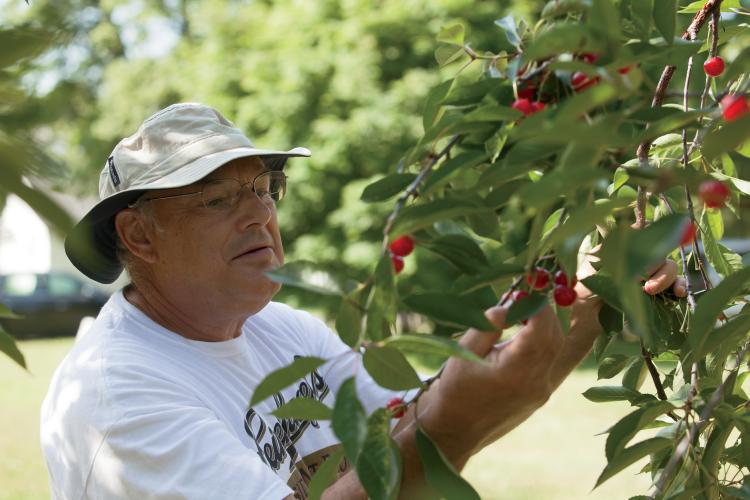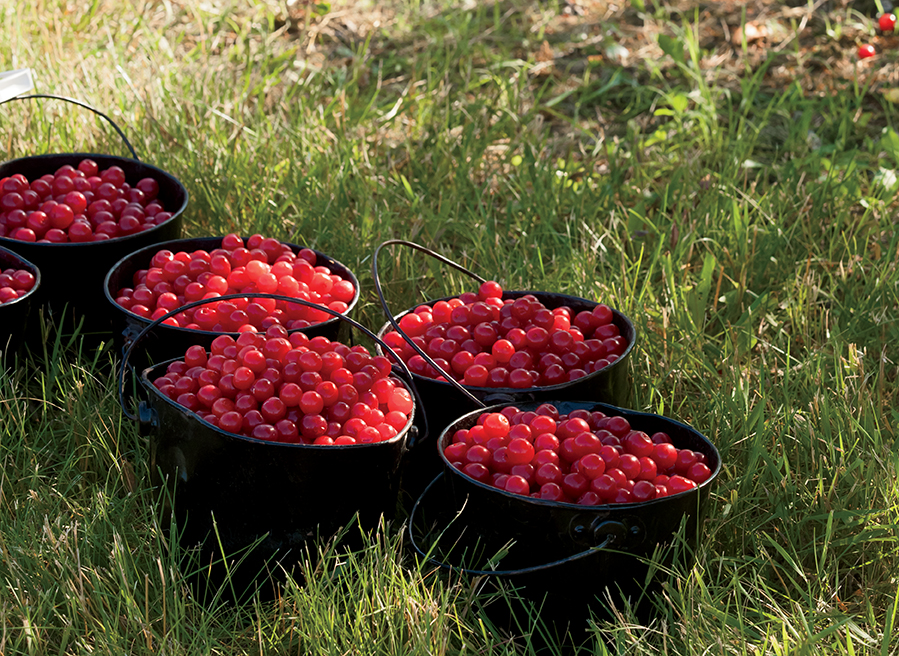Home > Wisconsin > Wisconsin Crops & Livestock > Wisconsin Grows Great Variety of Specialty Crops
Wisconsin Grows Great Variety of Specialty Crops
In partnership with: Wisconsin Department of Agriculture, Trade and Consumer Protection.
As the nation’s top cheese producer, Wisconsin excels at producing more than 600 varieties of cheese and dairy products.
However, Wisconsin’s rolling hills and lush fields abound with more than dairy farms. With approximately 15 million acres dedicated to farming, the state produces a wide variety of specialty crops alongside its dairy products, including cranberries, honey, apples, strawberries and a host of other valuable agricultural commodities.
In fact, Wisconsin leads the nation in the production of cranberries, oats and snap beans for processing, and ranks in the top ten for crops you may not expect such as potatoes, cherries, maple syrup, carrots, sweet corn and green peas for processing, onions, cabbage for sauerkraut and cucumbers for pickles. Other unexpected crops include mint and ginseng.
“We have 25 mint growers and supply a lot of mint to the gum industry. We grow 95 percent of the ginseng and supply it to the Asian marketplace,” says Ben Brancel, Wisconsin’s Secretary of Agriculture, Trade and Consumer Protection, pointing to the importance of these crops both domestically and globally.
“Agriculture is a very diverse and important part of the Wisconsin economy,” says Allen Teach, president and owner of Sunrise Orchards. “I hope it never gets overlooked.”
With the help of several family members, Teach and his wife, Lynne, own and operate Sunrise Orchards, a 225-acre apple-growing operation located in Gays Mills, Wisconsin, also known as the “official” apple capital of the state. As third-generation owners of the orchard, the Teach family oversees the planting, growing, picking, processing and selling of approximately 125,000 bushels of apples annually.
“Wisconsin grows more apples than a lot of people give it credit for,” Teach asserts. “We don’t have an extremely large apple industry, like Washington or New York, but it’s a diverse apple business within the state.”
Sunrise Orchards produces more than 30 varieties of apples, including Sunrise, Honeycrisp, McIntosh and Empire. Ripening dates for the apples vary from late August to mid-October. Teach says Wisconsin’s cool fall weather is the key to developing “nice red colors” on the apples. He also attributes Sunrise Orchards’ success to its location on the steep hills near Gays Mills, which often allows the orchard to escape damage from frosts.
“We grow apples in a really unique spot in southern Wisconsin,” Teach explains. “It’s really steep and hilly. As it gets colder on a frosty night, the air gets denser. It runs down our hills into the valley, so we can be quite a bit warmer here than it is in the valley below.”
Weather and location also play a key component in the production of Wisconsin’s number one berry crop, the cranberry. Like apples, cranberries require cooler nights so that colors and sugars can form in the fruit.
Nicole Hansen, operations/plant health manager of Cranberry Creek Cranberries in Necedah, Wisconsin, attributes the success of the state’s cranberry industry to the weather. She also praises Wisconsin cranberry growers for their ability to culturally manage their plants in unique ways.
“[Cranberry] growers are very in tune to what’s happening in Wisconsin, as far as managing yields, reducing costs, being stewards of the land, and sustainability,” Hansen says. “Wisconsin cranberry growers are a close-knit group of people that are willing to work together.”
Owned by Bill Hatch, Cranberry Creek Cranberries consists of 4,000 acres, with approximately 850 acres devoted to growing perennial cranberry vines.
“The additional land is support land,” Hansen explains. “There’s a 10-to-1 ratio: for every 1 acre of cranberries, there’s 10 acres of support land. Support lands can be great habitats [for wildlife], and include wetlands, or managed forest lands. It depends on the type of cranberry grower.”
While individual cranberry growers don’t typically share their yields, cranberry crops are measured in 100-lb barrels. In 2012, the state of Wisconsin produced 4.83 million barrels of cranberries, or 60 percent of the United States’ total cranberry crop.
“It’s a great industry, and there are a lot of very proactive people that are actively engaged every minute of the day,” Hansen says. “It’s a way of life and a business.”






